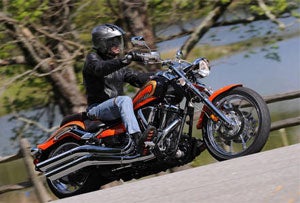 Motorcycle insurance terminology can be a little confusing or overwhelming to the uninitiated, so we’re trying to help out by explaining what some of these terms mean. This time we’ll look at Liability Coverage.
Motorcycle insurance terminology can be a little confusing or overwhelming to the uninitiated, so we’re trying to help out by explaining what some of these terms mean. This time we’ll look at Liability Coverage.
To put is plainly, liability insurance covers everyone except you. In other words, if you ride your motorcycle into the side of a car, liability insurance will cover the car and its occupants – not you or your bike.
Minimum liability coverage varies from state to state and generally looks something like this: $25,000BI/$50,000BI/$25,000PD. BI is for Bodily Injury and PD is property damage. The first number is the maximum coverage for any injured individual. The second number is the maximum coverage for all injured. The final number is the maximum for damaged property.
What Does It All Mean?
To help put these numbers in perspective, let’s say four people were in the car you hit. The most your insurer will pay out to any individual injured in the crash is the first number ($25,000 in this case). If all four were injured the insurer would pay out as much as $50,000 total, with no more than $25,000 going to any one person. Finally, the insurer would pay up to $25,000 to repair or replace the car. Should the medical bills or property damage exceed these numbers, you could be held responsible for the remainder.
Passenger liability is another thing to consider. In some states you are not required to have liability coverage for the passenger on your bike. However, if you do ride with a passenger it would only make sense to protect them as well or you could be held personally liable for any medical bills.









